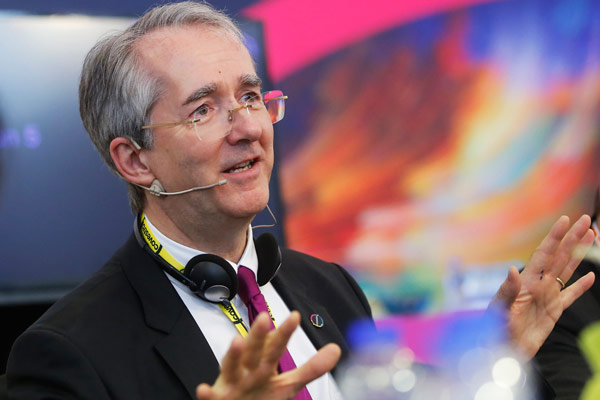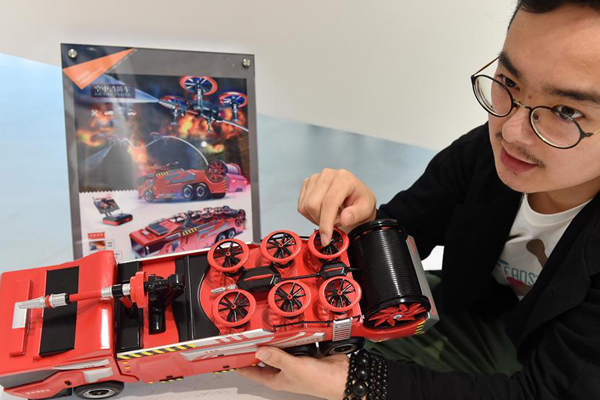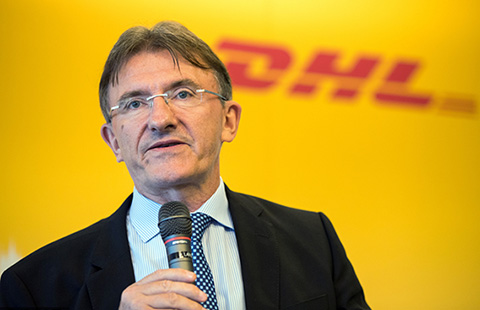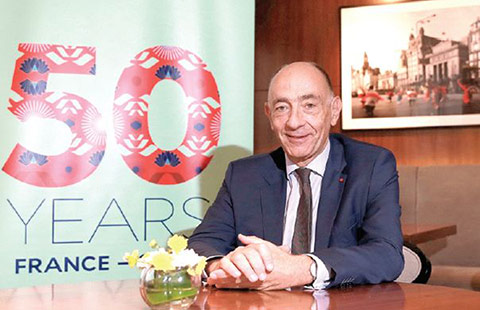Firm considers licensing method to transform gas into plastic products
 |
|
Patrick Thomas, CEO of German plastics and chemicals giant Covestro AG. [Photo provided to China Daily] |
Covestro is open to prepare to license its cutting-edge technology to turn carbon dioxide into valuable plastic products to China, the CEO of the German materials manufacturer said.
Covestro, formerly Bayer MaterialScience, said it was going to license its technology of turning the unwelcome greenhouse gas into useful plastics-and China may be among those to adapt the innovation which could shake up the polyurethane industry with a reduced dependence on oil and a reduced carbon footprint size.
The group said that by using carbon dioxide to synthesize plastics, such as premium foams, Covestro was helping to preserve increasingly scarce fossil resources and close the carbon loop.
During talks several weeks ago with China Petroleum & Chemical Industry Federation chairman Li Shousheng, Covestro's CEO Patrick Thomas said his company was open to license the technology to other producers if that's what they would like to use.
That was because the organization was looking to get more people to engage with the technology and to speed up the pace of innovation.
Thomas said the technology in China at the moment for making polyurethane material had room to be improved, so there was a real opportunity to make a difference if the technology used was the latest one. He said he expected to see licensing of his technology in countries like China.
"The purpose of licensing the technology is to encourage more people to use the technology and it is totally logical for China to be the first," Thomas said, adding that the barriers to enter a new technology was higher in a fully-developed economy like Germany.
"We need more people to work on it. Our major innovation is changing people's minds from perceiving carbon dioxide to being a negative thing to being a positive thing, and that's the most important step. Once you've decided that carbon dioxide is a valuable source of carbon in the chemical industry, then you can do a whole load of other things," he said.
Thomas said Covestro would like to apply a mixed approach of licensing and self manufacturing to promote the technology to more people.
"We are learning and we are also sharing as we go, because then it will happen faster," he said. The CEO added that he believed the days of one company monopolizing a technology were gone and technology needed to be opened up and licensed.
According to Thomas, nine years ago Covestro, then Bayer MaterialScience, had the vision of making materials out of carbon dioxide and today the company had gone from a dream to a commercial reality thanks to partnerships.
One year later the company kicked off a CO2 pilot project in collaboration with Aachen University's CAT catalytic center to turn the waste product to plastic components, as a solution to tackle the greenhouse gas effect, which is one of the biggest challenges of the time.
Now the first mattresses and upholstered furniture made with the CO2-based foam are scheduled to be released in the market before the end of the year. The first production plant for CO2-based polyether polyols is located at Covestro's Dormagen site.
Covestro chief innovation officer Markus Steilemann said his company was collaborating with partners in industry and the academia to develop further components and potential applications for CO2-based polyurethanes.
Both Thomas and Steilemann made their remarks at K 2016, a triennial industry event that lasts for eight days and closed on Oct 26 at Dusseldorf, Germany. The event is widely regarded the world's No 1 trade fair for plastics and rubber and was attended by many small and medium-sized Chinese industrial enterprises, looking to upgrade themselves in the industrial value chain through overseas market participation and brand marketing.
Thomas said he disagreed with simplistic views that China was currently undergoing a slowdown in its economy. Instead, he said he believed it was more a question of a change from quantitative growth by percentages per annum, to one of quality of growth.
The difference with quantitative growth was that qualitative growth was driven by innovation. The latter's characteristics included not only the quality, but also the innovative content of the product.
"There are huge opportunities with regards to China's urbanization, aging population, and sustainable growth," he added.























